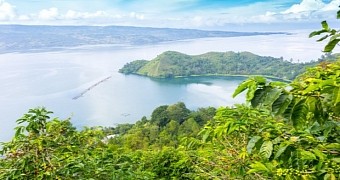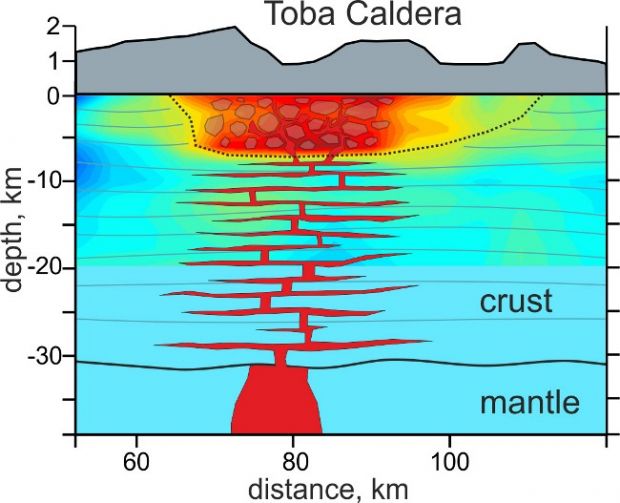Layers of magma resembling a pile of freakishly oversized (and positively deadly, some might want to add) pancakes currently rest under Indonesia's Lake Toba, researchers write in a paper published in today's issue of the journal Science.
As cool as this piece of news might sound, the fact of the matter is that this discovery is a wee worrying. Thus, scientists say that, at some point in the future, all this molten material that is now resting under Lake Toba could burst out of the ground in a massive eruption.
The anatomy of the magma reservoir under Lake Toba
The scientists behind this researcher project explain that the Toba caldera formed in the aftermath of a massive volcanic eruption that occurred some 74,000 years ago and that coughed out about 2,800 cubic kilometers (nearly 672 cubic miles) of material.
Thus, it was this monster eruption that caused the land in the affected area to collapse and that birthed the caldera that now serves as a home for Indonesia's Lake Toba, specialists with the Helmholtz Centre Potsdam - GFZ German Research Centre for Geosciences say.
For quite a while, researchers were unable to tell how this eruption took place. Now that seismometers have helped them document the structure of the magma reservoir under Lake Toba, they argue that the material ejected at that time had accumulated in the Earth's crust for millions of years prior to the event.
As detailed in the image below, molten material originating from deep inside the planet forms layers when pushed from the mantle into the crust resting under Lake Toba. Of these layers, some are located at a depth of about 30 kilometers (roughly 18 miles).
“With a new seismological method we were able to investigate the internal structure of the magma reservoir beneath the Toba caldera. We found that the middle crust below the Toba super volcano is horizontally layered,” said study co-author Christoph Sens-Schönfelder.
The geoscientist and his colleagues argued that, but for the formation of such layers in the Earth's crust, chances are that the super eruption that occurred 74,000 years ago would not have taken place. This is because the ground would have had way less molten material to spew out.
A better understanding of other massive volcanoes
Despite the fact that they only happen once every couple hundred thousand years or so, massive eruptions like the one that birthed the Toba caldera can have a dramatic impact on the global climate and natural ecosystems.
Hence, researchers are trying to gain a better understanding of what problematic areas like the Yellowstone Park and the caldera of New Zealand's Lake Taupo might be up to. The goal is to determine the risk for another massive eruption like the one that hit Indonesia 74,000 years ago to occur.
Writing in the journal Science, specialists with the Helmholtz Centre Potsdam - GFZ German Research Centre for Geosciences and colleagues say that, now that they are familiar with the anatomy of the magma reservoir under Lake Toba, they can make more accurate predictions concerning the behavior of other massive volcanoes.

 14 DAY TRIAL //
14 DAY TRIAL // 

